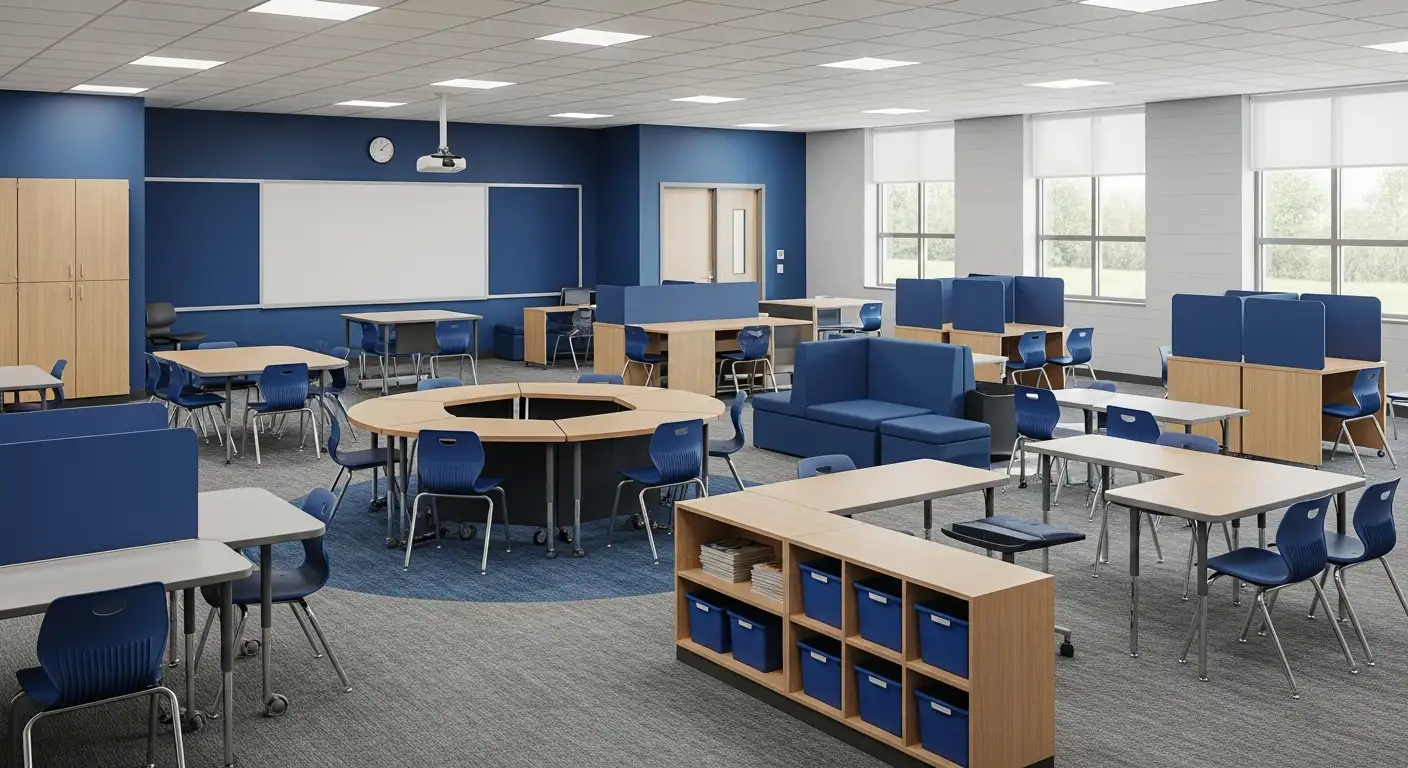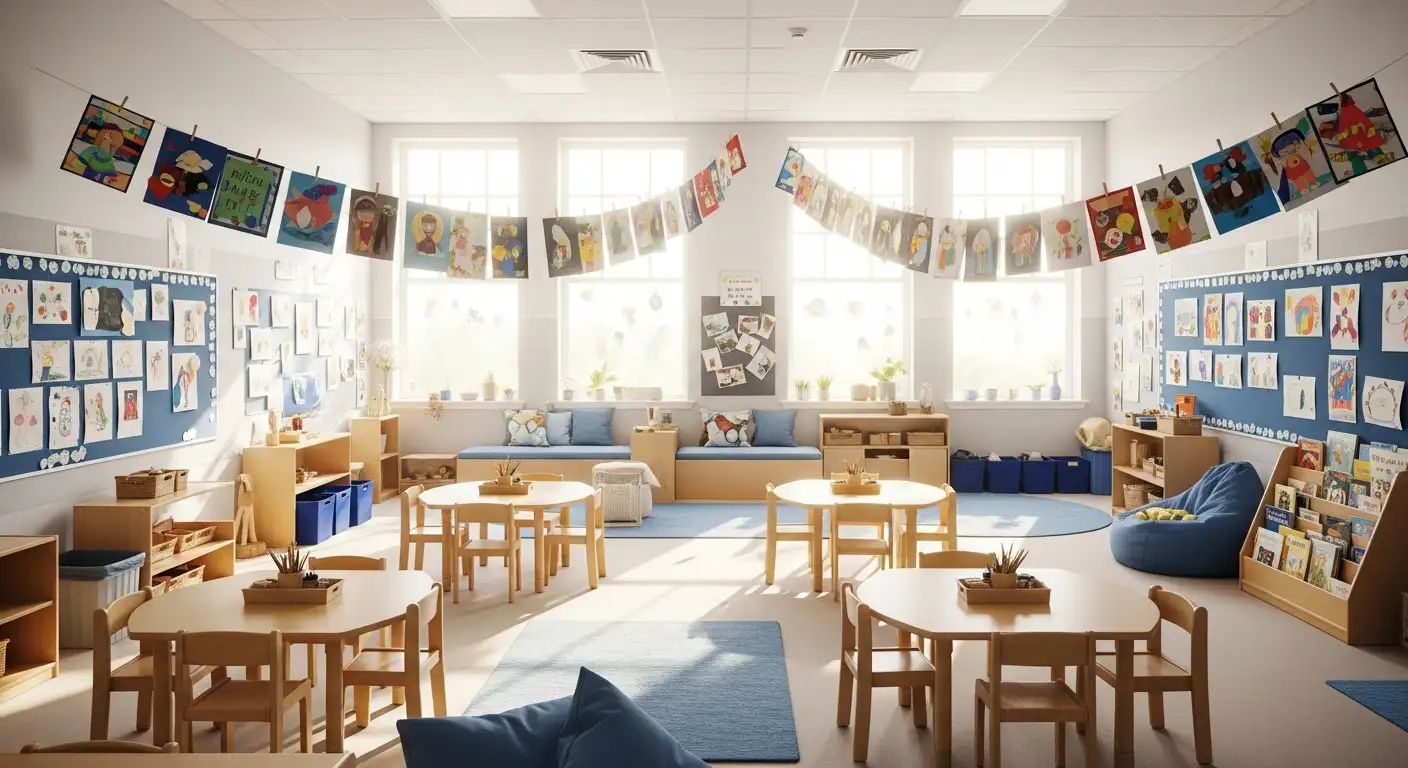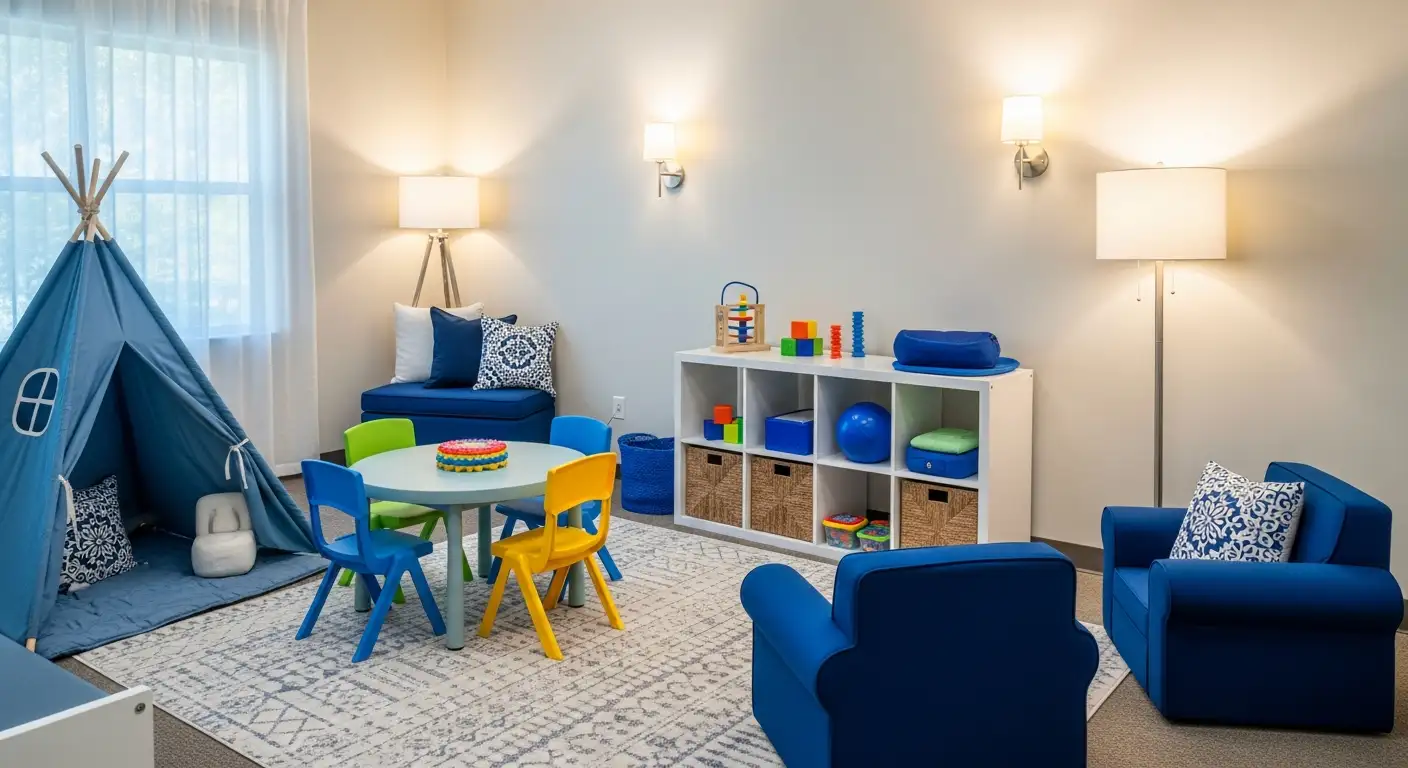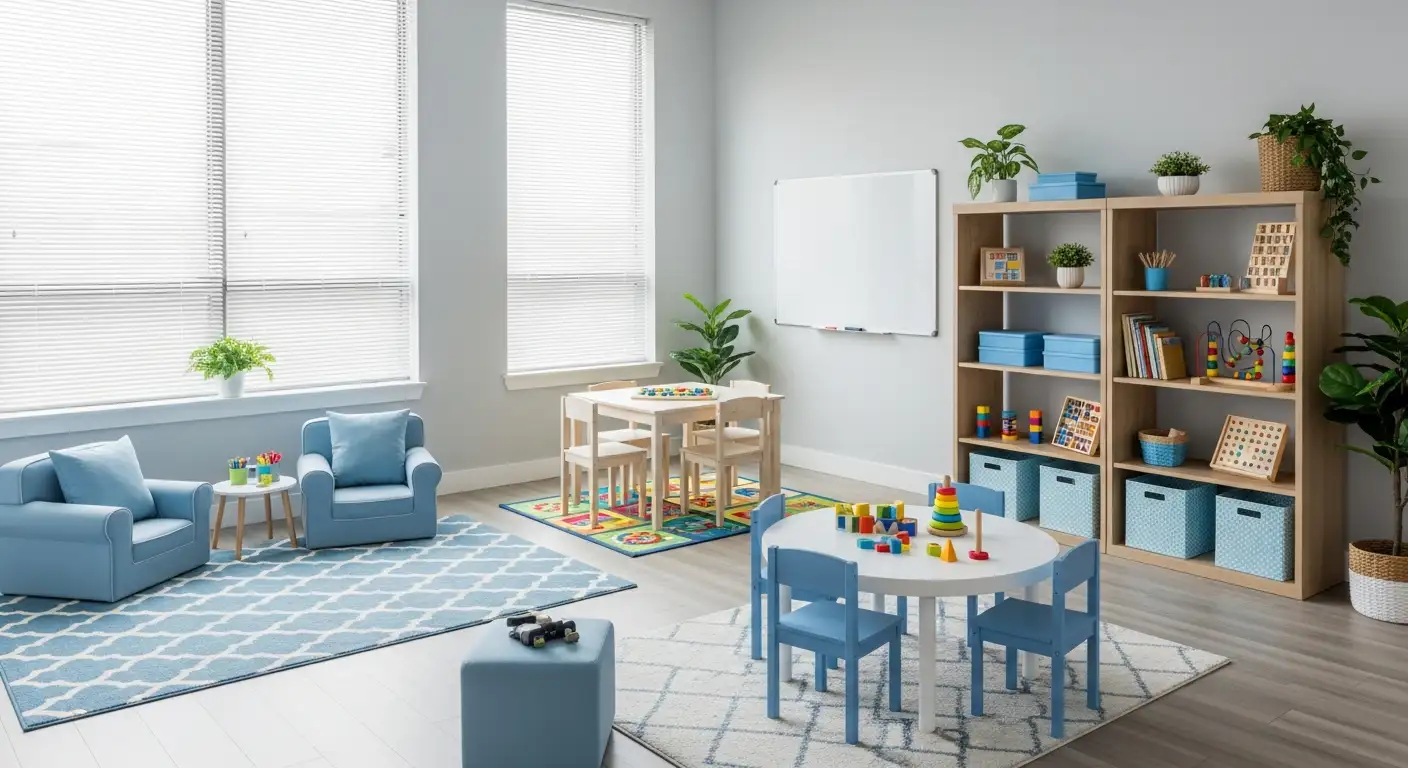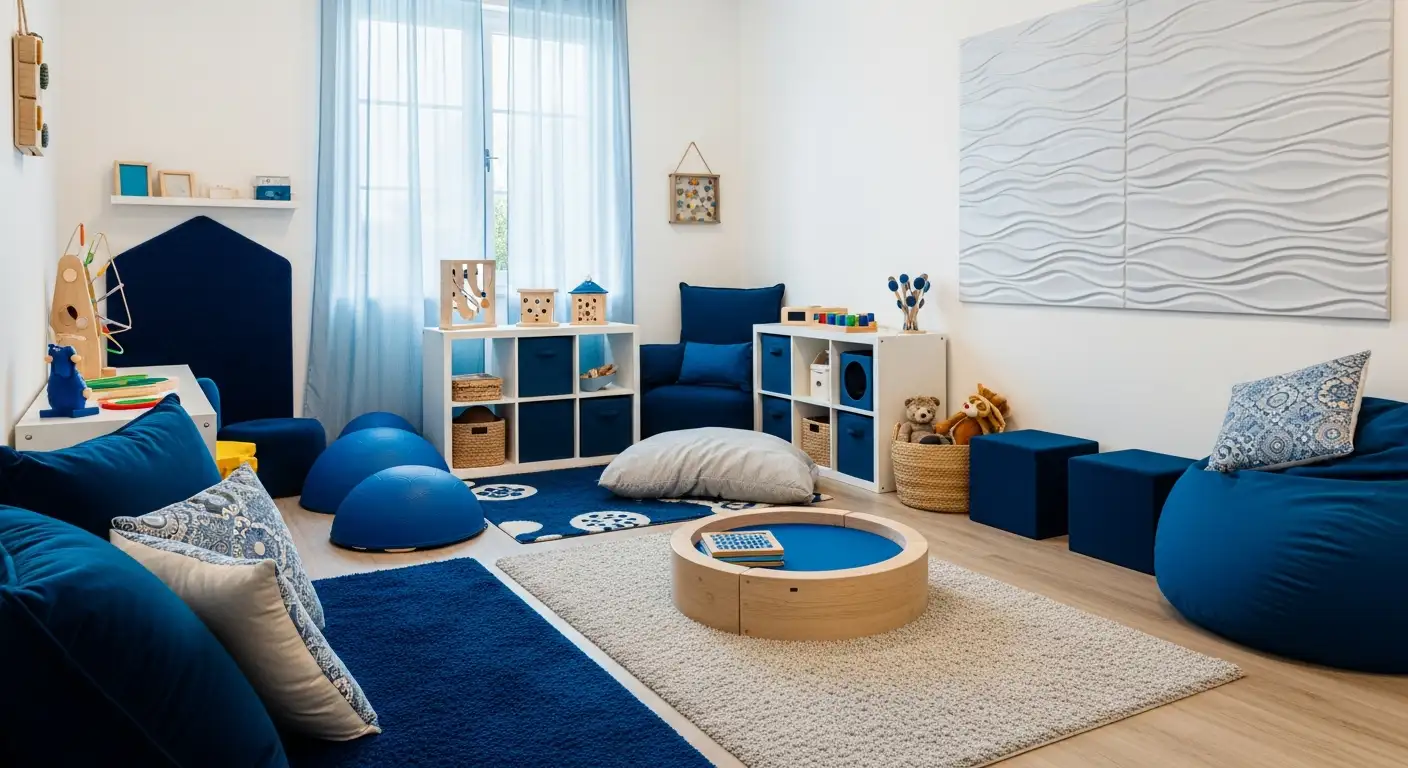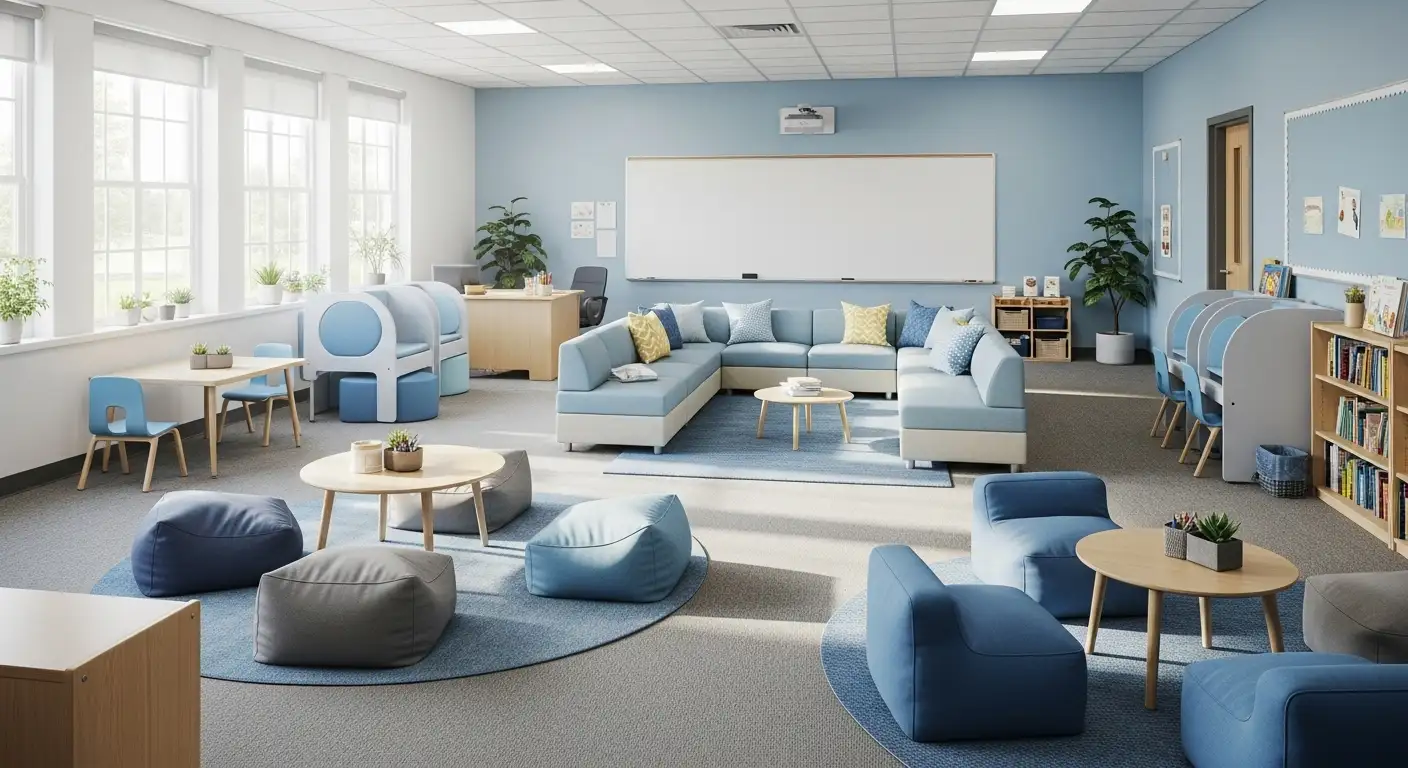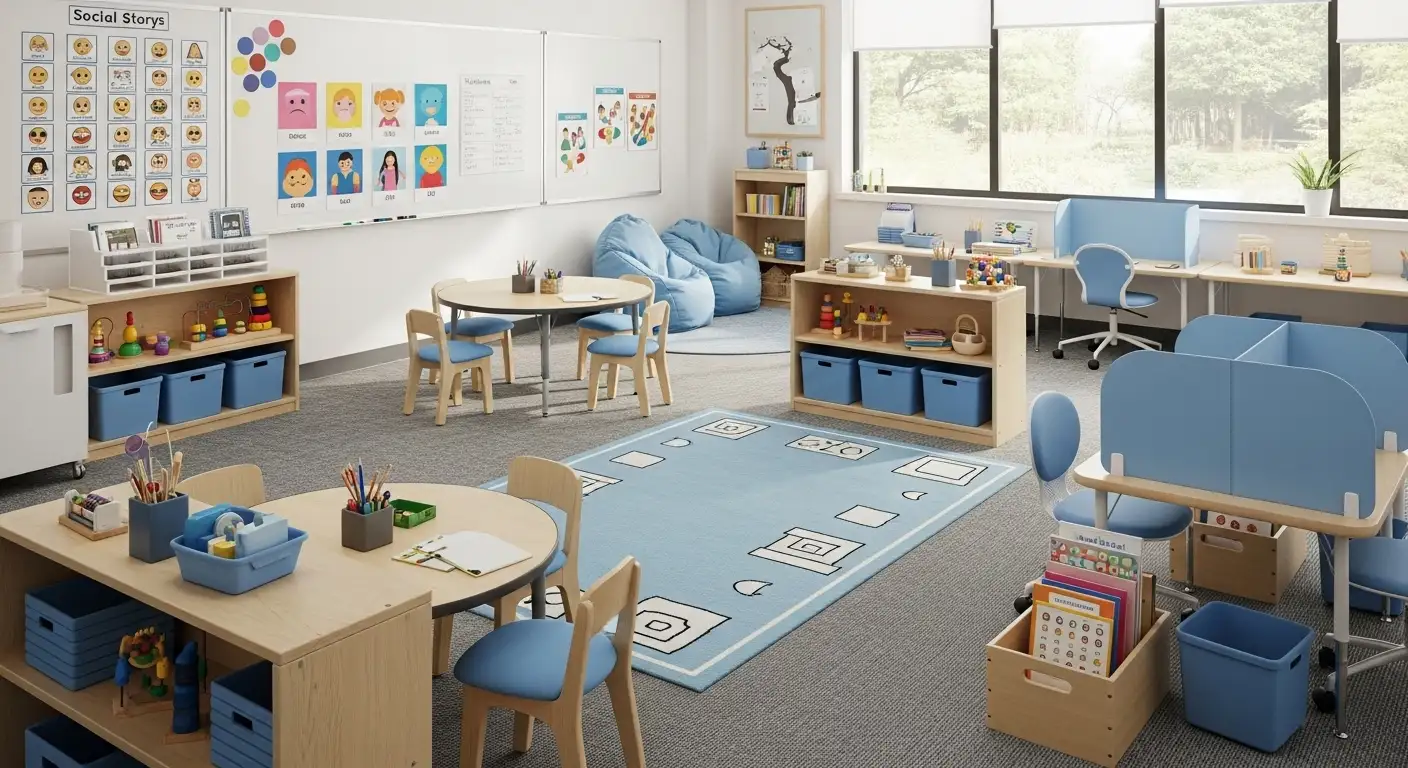Supporting Autism in Mainstream Education Settings
Enhancing Inclusion and Support for Autistic Students in Mainstream Classrooms

Bridging the Gap in Autism Support Within Schools
While mainstream education strives for inclusivity, supporting autistic students effectively remains a complex challenge. Research reveals a significant gap in strategies that modify and adjust educational settings to cater to the unique needs of these students. This article explores evidence-based approaches, therapies like ABA, and practical classroom modifications to foster an engaging, supportive, and inclusive learning environment for autistic children.
Understanding ABA Therapy: A Cornerstone of Autism Support
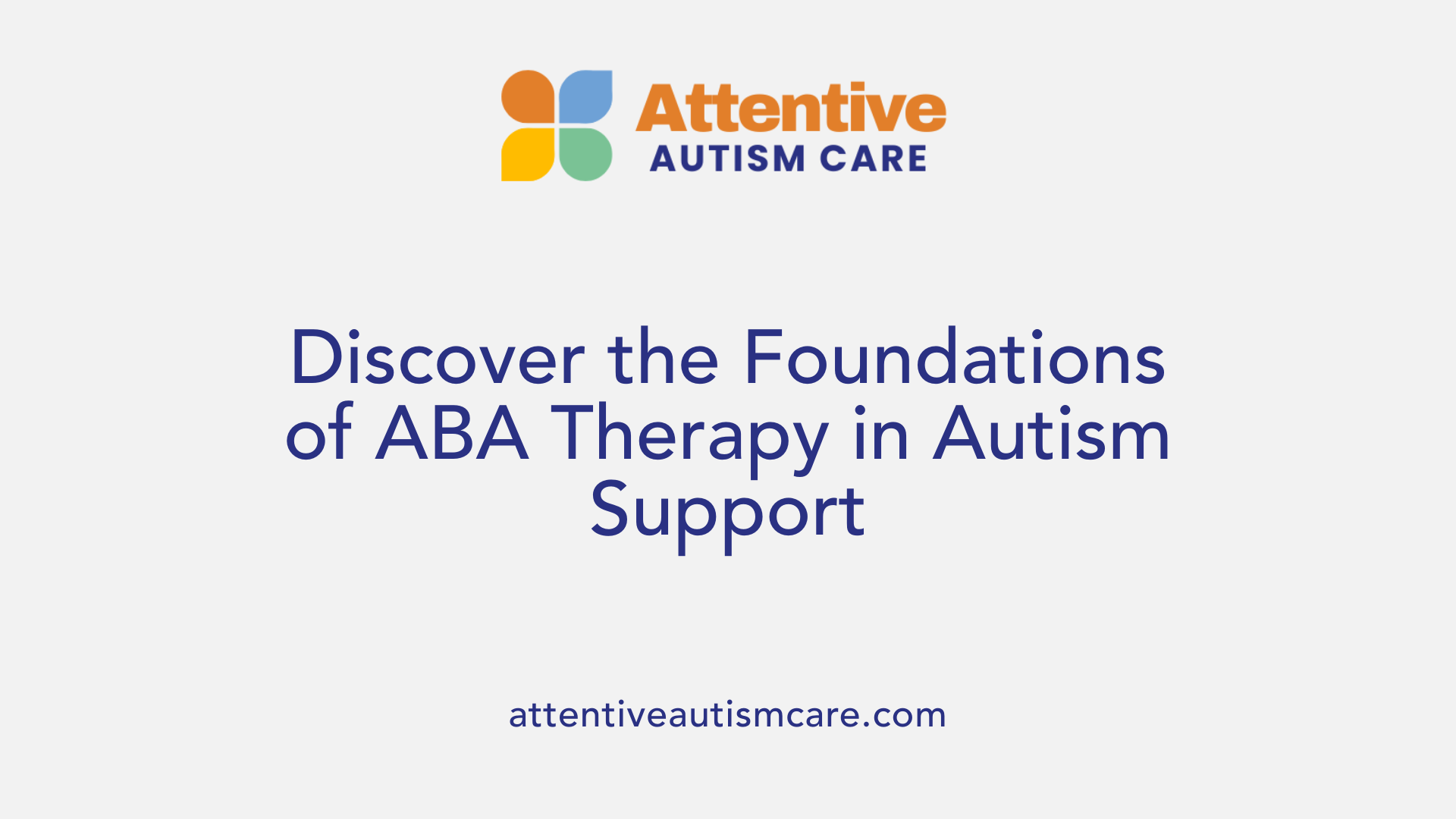
What is Applied Behavior Analysis (ABA) therapy?
Applied Behavior Analysis (ABA) therapy is a scientifically supported approach focused on improving social, communication, and learning skills for individuals with autism spectrum disorder (ASD). It carefully assesses each student's behavior and environment to create personalized goals. Using strategies like positive reinforcement and prompting, ABA encourages desirable behaviors while aiming to reduce harmful ones.
Techniques Used in ABA
ABA therapy employs various techniques to suit individual needs. Positive reinforcement, such as praise or token economies, motivates children to adopt preferred behaviors. Structured methods include Discrete Trial Training, naturalistic teaching, and Pivotal Response Treatment. These techniques focus on teaching language, social skills, daily living tasks, and academic abilities.
Settings and Adaptability of ABA Therapy
ABA is versatile and adaptable across different settings including homes, schools, and community environments. Educational programs often incorporate ABA principles to support autistic students in mainstream classrooms. For example, the Incredible Years Teacher Autism program uses positive reinforcement, structured routines, and individualized supports to enhance engagement and behavior management.
This approach is widely recognized as an evidence-based method that promotes greater independence and social participation. Early intensive ABA intervention has been shown to yield significant developmental improvements, underscoring its importance in autism support within inclusive education settings.
How ABA Therapy Enhances Learning and Behavior in Autism
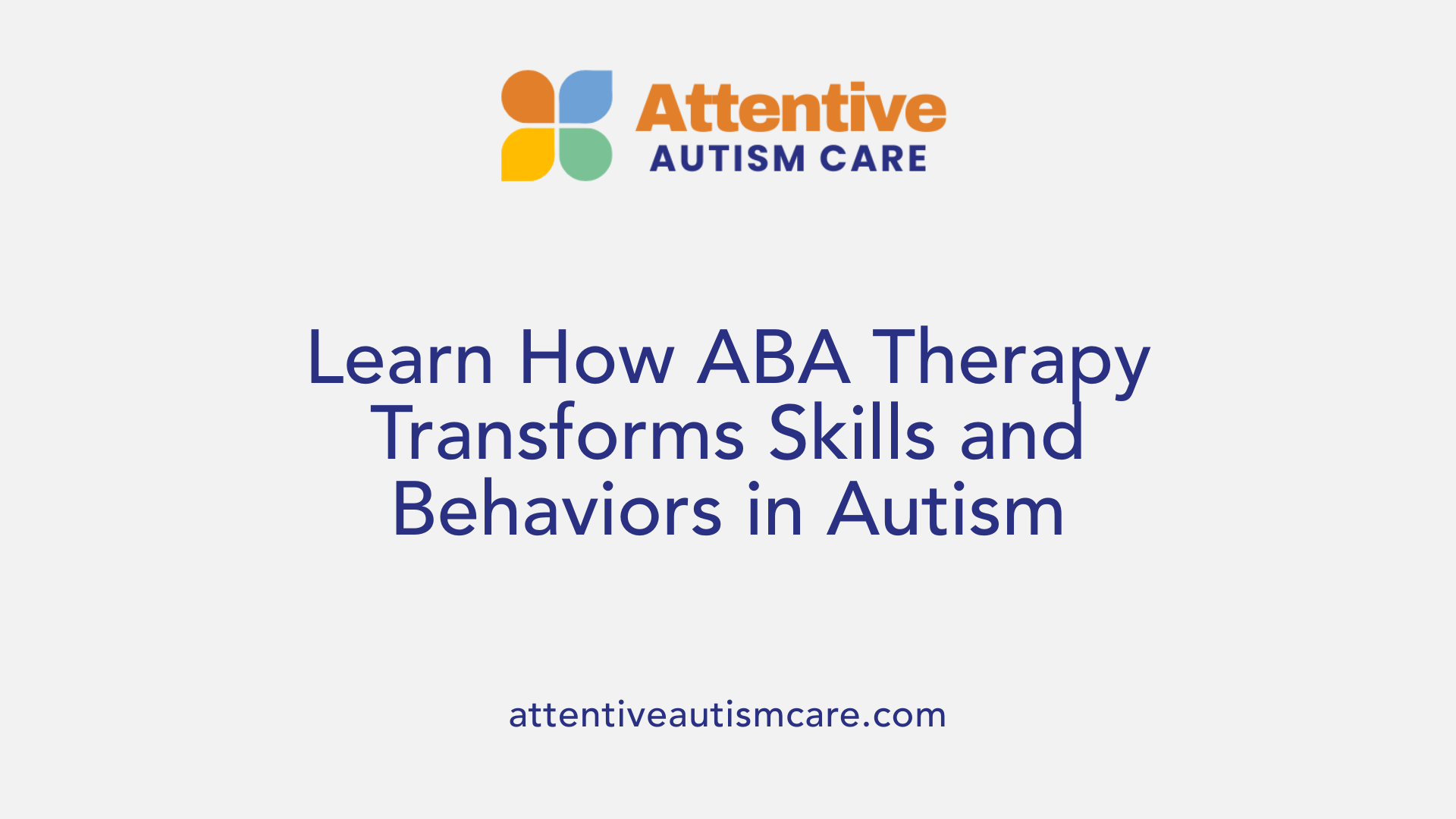
How does ABA therapy help individuals with autism?
ABA therapy benefits autistic individuals by employing scientifically validated approaches to facilitate meaningful behavioral change. It breaks complex tasks into smaller, manageable steps, helping students develop vital skills such as communication, social interaction, and self-care.
Positive reinforcement is a central mechanism in ABA, where desirable behaviors are encouraged through rewards like praise or tokens. This motivation leads to increased engagement and the gradual acquisition of important skills.
ABA therapy also involves analyzing antecedents (what happens before a behavior) and consequences (what follows), enabling practitioners to identify triggers and reinforcers that shape behavior. This personalized approach allows for the creation of individual plans tailored to the needs of each student.
By focusing on enhancing helpful behaviors and reducing problematic ones, ABA supports improvements in communication and independence. Techniques embedded in ABA promote social skills, attention regulation, and daily living activities, ultimately aiming to improve the quality of life for autistic individuals.
Programs such as the Incredible Years use ABA principles alongside visual supports and structured routines to provide predictable and supportive learning environments. Combined with professional development for educators in ABA strategies, these methods foster respectful, autonomous student engagement within mainstream educational settings.
Qualified Professionals Delivering ABA Therapy
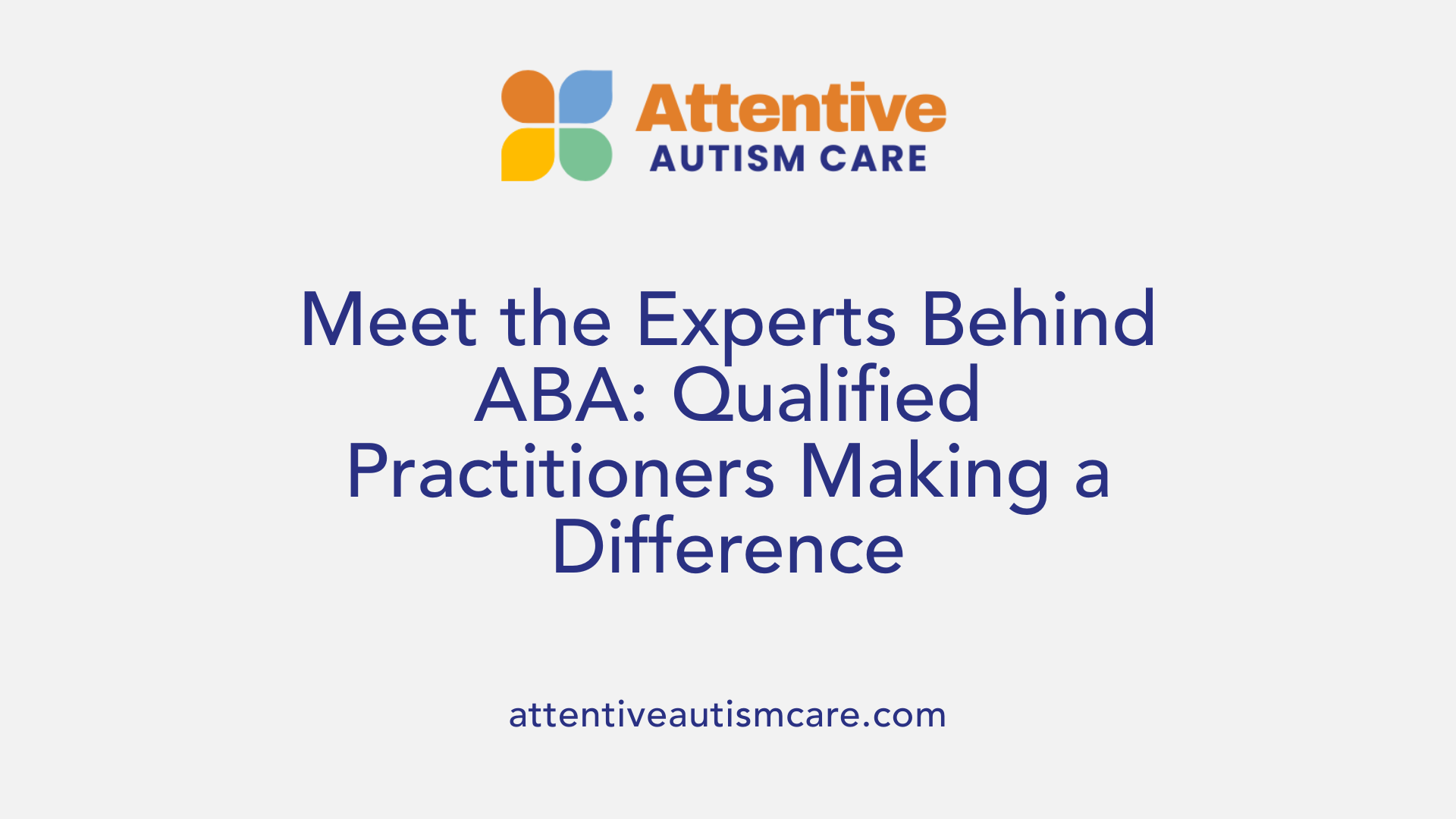
Who provides ABA therapy and what qualifications do they have?
ABA therapy is delivered by trained professionals such as Board Certified Behavior Analysts (BCBAs), ABA therapists, and technicians. These providers possess specialized qualifications in behavioral analysis to ensure effective treatment.
Qualifications and training of ABA providers
To become a BCBA, individuals must earn a graduate degree in applied behavior analysis, psychology, or a related field and successfully pass the BCBA certification exam. This exam rigorously tests knowledge of behavior-analytic skills and ethical standards. ABA therapists typically hold a master's degree in ABA or a closely related discipline. They are required to complete extensive supervised fieldwork, which generally totals between 1,500 to 2,000 hours. This hands-on experience is crucial for developing practical competencies in delivering ABA interventions.
Certification and ethical standards
Certification and licensure requirements differ by state but usually include mandatory continuing education and strict adherence to ethical guidelines set by professional organizations such as the Behavior Analyst Certification Board (BACB). These ethical standards ensure that professionals maintain quality care and respect client rights throughout treatment.
Roles of BCBAs and therapists
BCBAs design and oversee individualized treatment plans based on thorough assessments. ABA therapists and technicians implement these plans directly with clients, using evidence-based techniques to promote skill acquisition and reduction of problem behaviors. This collaborative teamwork ensures that therapy is tailored to each student's unique needs and learning profile.
Core Techniques Employed in ABA Therapy for Autism

What are the common techniques used in ABA therapy?
Applied Behavior Analysis (ABA) therapy utilizes several structured techniques to support skill development and behavior management in autistic students.
Discrete Trial Training (DTT) is a highly organized method where specific skills are taught in small, repeated steps using clear instructions and immediate reinforcement. This helps students grasp foundational skills which can be built upon progressively.
Natural Environment Teaching (NET) engages learners by embedding teaching moments within their everyday surroundings. This approach boosts the generalization of skills by making learning meaningful and practical in real-life contexts.
Prompting, fading, and positive reinforcement work together to build independence. Initially, prompts or cues help initiate a desired behavior, and over time, these supports are gradually reduced (fading), encouraging autonomous actions. Positive reinforcement is central to ABA, wherein rewarding desired behaviors increases their frequency.
Behavior chaining and modeling break down complex behaviors into smaller, manageable steps, teaching each part sequentially until the full behavior is learned. Modeling involves demonstrating behaviors for students to imitate, which is especially effective for social and communication skills development.
Additional techniques include script fading to reduce reliance on rehearsed language, redirection to divert unwanted behaviors, and behavior contracts that clearly outline expectations and consequences, further supporting skill acquisition and behavioral improvements.
These methods together form a comprehensive framework that is evidence-based and adaptable, enabling educators and therapists to tailor interventions that promote engagement, learning, and positive behaviors in autistic students.
Evaluating ABA Therapy Effectiveness Across the Autism Spectrum
Is ABA therapy effective for all individuals with autism?
ABA (Applied Behavior Analysis) therapy is widely recognized as an evidence-based intervention for managing and improving behaviors in autistic children. It has demonstrated effectiveness in enhancing communication, social skills, and daily living abilities for many individuals. However, its success is not uniform across the entire autism spectrum.
Variability of ABA outcomes
The effectiveness of ABA therapy can vary due to factors including:
- Individual differences: Age, symptom severity, and unique learning profiles affect responsiveness.
- Quality and consistency: Skilled implementation by trained professionals and ongoing reinforcement across environments improve outcomes.
- Therapy customization: Tailoring ABA programs to each child's specific needs and strengths is essential.
Factors influencing therapy success
Success with ABA also depends on practicing child-centered approaches that emphasize naturalistic and play-based learning rather than rigid drills. Incorporating visual schedules, clear communication using concrete language, and positive reinforcement methods like token economies help maintain engagement and motivation.
Modern child-centered ABA approaches
Contemporary ABA programs prioritize respectful and autonomous student engagement. They use:
- Collaborative strategies: Involving teachers, parents, and specialists for consistent support.
- Predictable routines: To reduce anxiety and aid smooth transitions.
- Sensory supports: Like noise-canceling headphones and fidget toys to manage sensory sensitivities.
While ABA therapy is beneficial for many autistic children, outcomes can vary widely. Ensuring that therapy is delivered ethically and responsively, with ongoing training and resources for professionals, maximizes its positive impact. It is crucial to recognize and respect individual differences to best support each child's growth and success.
The Underserved Area: Environmental Adaptations in Mainstream Classrooms
What are the research gaps in environmental adjustments for autistic students?
Most existing studies on autism in mainstream education focus heavily on teachers' attitudes and autistic students' social skills development. However, there is a noticeable lack of research addressing specific environmental adaptations within the classroom that cater to autistic students' unique needs. This gap includes limited exploration of how physical spaces, sensory accommodations, and curriculum content adaptations can foster a more inclusive and supportive learning experience.
How do sensory sensitivities affect autistic students in mainstream classrooms?
Many autistic students experience heightened sensory sensitivities that can affect their ability to focus and participate fully. Sensory overload, triggered by excessive noise, bright lighting, or visual clutter, can lead to anxiety or withdrawal. To cope, sensory-friendly tools such as noise-canceling headphones and fidget toys are valuable supports. Quiet, designated sensory spaces within schools provide students with a calming area to manage sensory input and emotions, significantly improving their daily engagement and comfort.
Why is there a need for tailored classroom environments?
Creating tailored classroom environments means implementing structured routines, clear communication strategies using concrete language and visual supports, and predictable transitions to reduce uncertainty and stress. Programs like TEACCH Structured Teaching demonstrate how individualized assessments and predictable schedules can leverage autistic students’ strengths, promoting independence and engagement. Incorporating visual schedules and advance preparation helps reduce anxiety, while fostering peer relationships through group activities and buddy systems supports social inclusion.
Investing in professional development focused on autism-specific environmental adaptations equips teachers with essential strategies to effectively modify mainstream settings. Collaborative efforts involving educators, families, and specialists ensure consistency and reinforce inclusive practices. Addressing sensory sensitivities and content inclusion through these tailored adjustments bridges a critical gap, making workplaces more accessible and responsive to autistic students’ diverse needs.
Practical Classroom Strategies: Visual Supports and Predictable Routines
Use of Visual Schedules and Cues
Visual schedules are highly effective tools in supporting autistic students by helping them understand daily routines. These visual supports reduce anxiety and promote independence by providing clear expectations for what will happen next. Coupled with visual cues, they create an accessible learning environment that enhances comprehension and smooths transitions throughout the day.
Importance of Clear, Concrete Language
Communicating with autistic children requires the use of clear and concrete language. Abstract or ambiguous expressions can lead to confusion and frustration. Programs like Incredible Years adapt communication approaches to individual language levels, incorporating visual cues alongside simple directives to improve understanding and participation.
Establishing Structured Routines and Smooth Transitions
Structured routines form the backbone of a supportive educational environment for autistic students. Predictable daily schedules minimize stress and provide a sense of security. Preparing students in advance for any transitions within the school day is crucial for maintaining calm and focus. This approach assures seamless movement between activities and reduces behavioral disruptions.
Collectively, these strategies—visual schedules, clear language, and structured routines—create a predictable and supportive classroom that nurtures engagement and independence in autistic learners.
Sensory-Friendly Learning Spaces and Tools
Creating Sensory-Sensitive Environments
Sensory-sensitive environments are essential in mainstream education to support autistic students, who often experience sensory overload. Designing spaces that minimize excessive noise and visual distractions helps create a calm and predictable atmosphere. Features such as quiet corners and controlled lighting allow students to regulate their sensory input and engage more effectively in learning activities.
Tools Like Noise-Canceling Headphones and Fidget Toys
Incorporating sensory tools into the classroom further supports students' needs. Noise-canceling headphones help reduce auditory distractions, allowing students to focus better during lessons. Fidget toys provide tactile stimulation and a constructive outlet for restless energy, aiding concentration and self-regulation without disrupting others.
Managing Sensory Overload and Promoting Focus
Together, sensory-friendly environments and tools play a vital role in managing sensory overload. These adaptations help students maintain focus and reduce anxiety, ultimately promoting independence in the learning process. Educators must personalize these adjustments to individual sensitivities, ensuring that each student's sensory preferences and challenges are addressed effectively.
Fostering Social Skills Through Peer Interaction and Structured Support
Group activities and buddy systems
Group activities and buddy systems play a crucial role in supporting autistic students' social skills within mainstream education. These approaches encourage interaction in a natural and supportive environment. Buddy systems pair autistic students with peers who can offer guidance, provide social cues, and foster friendships, helping reduce feelings of isolation.
Modeling and coaching social behaviors
Effective strategies include modeling, prompting, and coaching social behaviors. Teachers and trained peers demonstrate appropriate social interactions, such as sharing, turn-taking, and communication cues. Through consistent practice and positive reinforcement, students gradually develop more confident and effective social skills.
Programs like Incredible Years supporting social inclusion
Evidence-based programs such as the Incredible Years Teacher Autism program emphasize social skill development by integrating individualized assessments and tailored support strategies. The program trains educators in techniques like social coaching and peer-mediated strategies, promoting positive social interactions and inclusion. It also encourages collaboration among teachers, parents, and specialists, ensuring consistent support across settings.
These methods create a structured and empathetic learning environment, enhancing autistic students’ social engagement and helping them build lasting peer relationships.
Evidence-Based Educational Models: Incredible Years Teacher Autism and TEACCH

What Are the Principles of Incredible Years and TEACCH?
The Incredible Years Teacher Autism program and TEACCH Structured Teaching are prominent evidence-based models designed to support autistic students in mainstream education. Both emphasize creating predictable routines and clear expectations.
Incredible Years focuses on positive reinforcement, communication through clear and concrete language, and using visual supports to aid understanding. TEACCH, meanwhile, stresses structured teaching environments tailored to the student's unique learning style to enhance engagement and reduce anxiety.
How Do These Models Use Individualized Assessment and Leverage Strengths?
A core element of both programs is individualized assessment. Each student’s abilities, preferences, and challenges are identified to tailor teaching strategies effectively.
For example, lessons and routines are adapted to capitalize on students’ strengths, whether in visual learning, structured tasks, or social interactions. This individualized approach helps promote independence, motivation, and skill development.
How Do Teachers, Parents, and Specialists Collaborate?
Collaboration is fundamental across these models. Teachers work closely with parents and specialists to ensure strategies and supports are consistent across home and school environments.
This team approach fosters a supportive network that reinforces positive behaviors and learning. Via ongoing communication and shared goals, all stakeholders contribute to enhancing the student’s educational experience.
These programs also include professional development opportunities, enabling educators to stay updated with best practices and ensuring effective implementation.
In summary, the Incredible Years Teacher Autism program and TEACCH Structured Teaching combine structured, evidence-based practices with collaborative support and individualized strategies to improve learning outcomes for autistic students in mainstream classrooms.
Professional Development and Training for Educators
Why is autism-specific training important for educators?
Autism-specific training is crucial because it equips educators with the knowledge and skills needed to modify and support the learning environment for autistic students effectively. It helps teachers understand the unique sensory sensitivities, communication styles, and behavioral needs of children on the spectrum, enabling them to create inclusive classrooms that promote engagement and reduce anxiety.
What resources are available for training on behavioral strategies?
There are comprehensive courses designed to support educators working in mainstream settings, focusing on autism, inclusion, and behavioral techniques. These courses teach strategies such as creating predictability through structured routines, using visual supports, and applying positive reinforcement methods, such as token economies and praise. For example, programs like the Incredible Years Teacher Autism program provide practical tools that incorporate clear language and visual cues tailored to individual learner needs.
How does ongoing professional development and collaboration benefit educators?
Continual training ensures that educators stay informed about the latest evidence-based practices and adapt to new insights and challenges in autism support. Scheduled programs, self-study tools, and practical resources foster ongoing learning. Collaboration between teachers, parents, and specialists is emphasized to maintain consistency and reinforce effective interventions across all settings. This cooperative approach promotes respectful and autonomous student engagement and better inclusion of autistic learners in mainstream education.
Towards More Inclusive Mainstream Education for Autistic Students
Supporting autistic students in mainstream educational settings requires a multifaceted approach—combining evidence-based therapies like ABA with tailored environmental adaptations and social supports. While current research underscores significant gaps, especially around classroom modifications, emerging programs and professional development resources provide educators with essential tools to foster understanding, structure, and engagement. Collaborative involvement of teachers, families, and specialists ensures consistency and reinforces progress across settings. Moving forward, ongoing research and investment in training are critical to developing inclusive classrooms where autistic students can thrive academically and socially.
References
- Strategies in supporting inclusive education for autistic ...
- Effective Classroom Strategies for Teaching Students with ...
- Strategies for Working with Students with Autism in the ...
- Applied Behavior Analysis (ABA)
- Beyond Behavior: ABA Therapy's Impact on Social and ...
- UnveilingBenefits of ABA Therapy for Children with Autism
- Boosting Social Skills and Communication Through ABA ...
- Applied Behavior Analysis (ABA)
- Applied Behavior Analysis (ABA)
- Applied Behavior Analysis (ABA) for Children With Autism












